Book of the Day Roundup: October 26-30, 2020
This Way Back
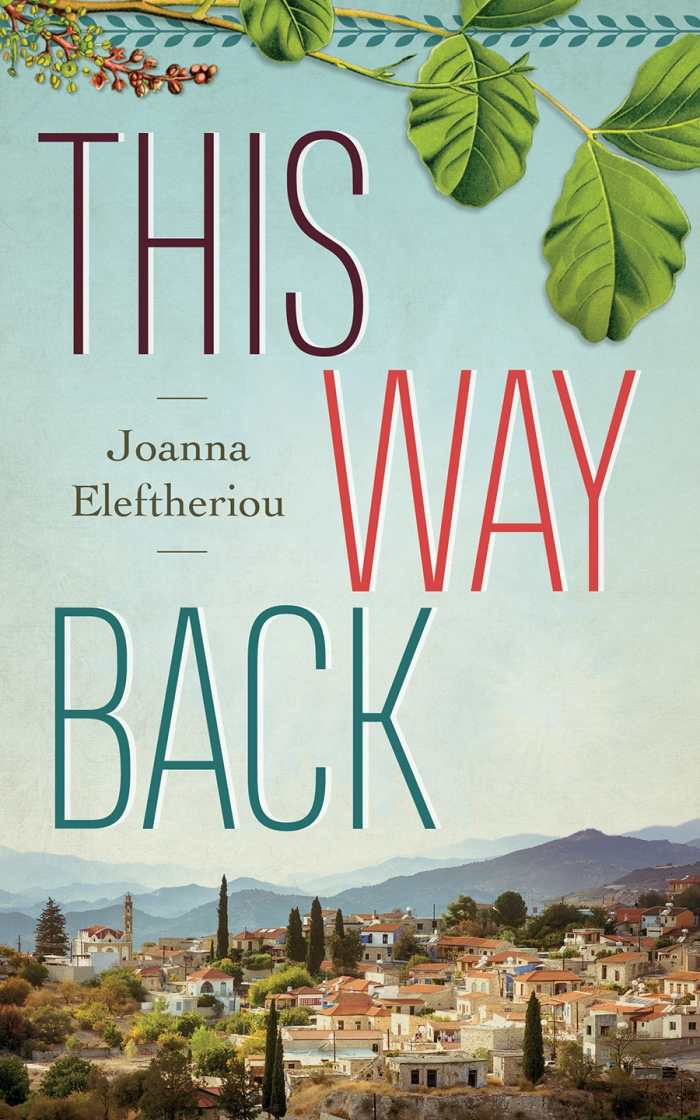
Joanna Eleftheriou
West Virginia University Press
Softcover $23.99 (264pp)
978-1-949199-66-6
Buy: Local Bookstore (Bookshop), Amazon
Joanna Eleftheriou’s nuanced essays ask if one can ever truly go home again.
Eleftheriou’s entries illuminate life at crossroads, handling Queens, New York, versus Cyprus; tradition versus modernity; and respect for the bonds of family versus living for oneself. A Greek Cypriot American and a lesbian, Eleftheriou’s return to her childhood home was characterized by these clashes, and she carved out a unique place for herself in the land. Though she felt a deep connection to Cyprus, the land where her father was born and chose to die, its cultural norms and traditions held her at arm’s length; she was a stranger in her childhood home.
The essays entice every sense and expound upon the beauty of the island and its culture. Eleftheriou describes the making and taste of kólyva, a wheat-based dish served as part of traditional mourning practices, and how the smell of jasmine wafting from the trellis in her father’s garden “would welcome summer visitors with its sweetness, and at night, bid them goodbye.”
Alongside such edenic passages, Eleftheriou acknowledges the inevitable serpents that marred the paradise. She recounts a classroom reenactment of a mass suicide from the Souliote War, when a group of women threw themselves to their deaths rather than face sexual violence from an invading army. Of marching in Cyprus’s first gay pride parade in 2014, she recalls abuse hurled by onlookers, and how a Greek Orthodox priest told her during graduate school that “being gay was not a sin, but more like being deformed.” The enduring split of Cyprus into Greek and Turkish sections becomes a metaphor for the dichotomy within Eleftheriou herself as she struggles to craft her own “Greekness.”
Heartfelt and heartrending, the essays of This Way Back encourage perseverance on the rocky path to self-discovery.
DANIELLE BALLANTYNE (August 27, 2020)
Enchanted New York
A Walk along Broadway through Manhattan’s Magical Past
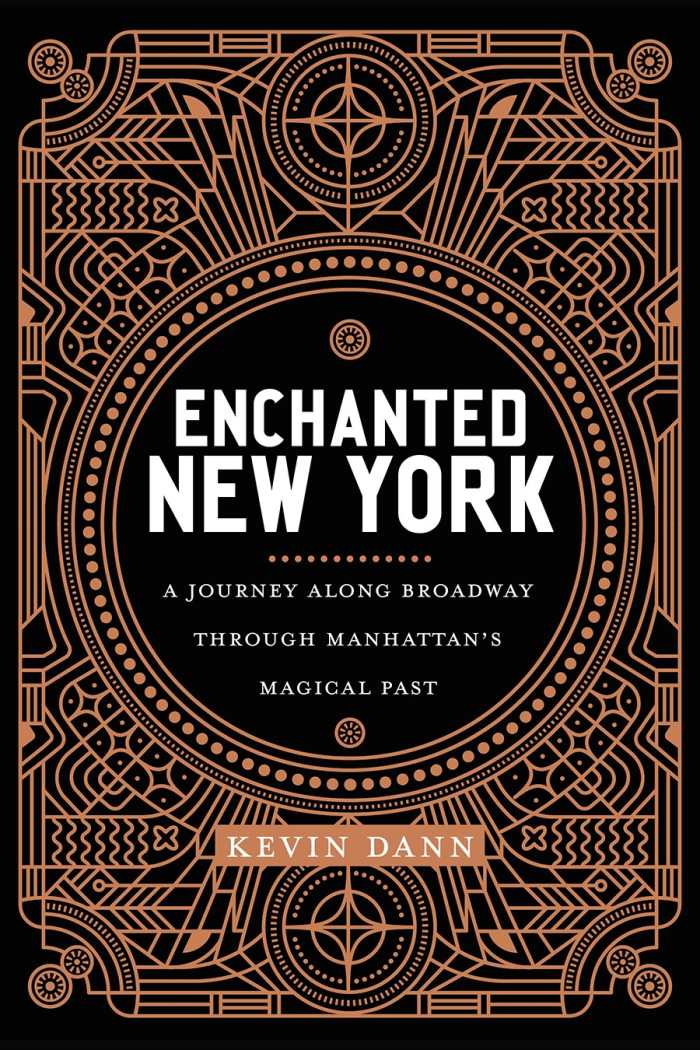
Kevin Dann
NYU Press
Softcover $22.50 (320pp)
978-1-4798-3826-4
Buy: Local Bookstore (Bookshop), Amazon
Kevin Dann’s Enchanted New York is a historical walk down Manhattan’s magical memory lane.
Revealing Manhattan to be a site of protracted enchantment, the book’s eight chapters are named for the type of magic and spiritual ideology that dominated their historical periods. Beginning with the presidential inauguration of 1789 (“inauguration” is traced to its Latin roots as an “installment under good omens;” Washington was sworn in with a Bible supplied by the Freemasons, and delivered a speech imbued with “the belief that God acted directly in human affairs”), what follows is a trail of magical tales involving the doctrine of providence, Freemasonry, animal magnetism, parapsychology, hauntings, the New Age movement, and the invention of the atomic bomb.
Among the examples are the fact that, in the early 1800s, Thomas Paine (known for The Rights of Man, which was said to make a mockery of religion) published The Age of Reason, which gained popularity among Manhattan’s skeptics. Then, Manhattan became the birthplace of technological developments in 1836, but was also synonymous with spiritual, psychological, and magical experimentation. Included is the story of a blind woman who became clairvoyant after being treated with animal magnetism.
During Manhattan’s 1890s occult revival, Houdini began his quest to debunk all spirit mediums; the investigation of mediums and magic found its way into esteemed universities like Columbia, culminating in the invention of parapsychology. Further, even after the atomic bomb was invented, Manhattan’s relationship with magic continued. Dann projects that it is likely to continue into the future, nodding to its inhabitants as they seek to live more consciously and harmoniously with the earth.
There are no ancient monuments to mark New York City’s magical history; in their place, Dann’s historical guide chronicles the city’s lesser-known magical past.
BIANCA BOWERS (October 22, 2020)
Maurice and His Dictionary
A True Story
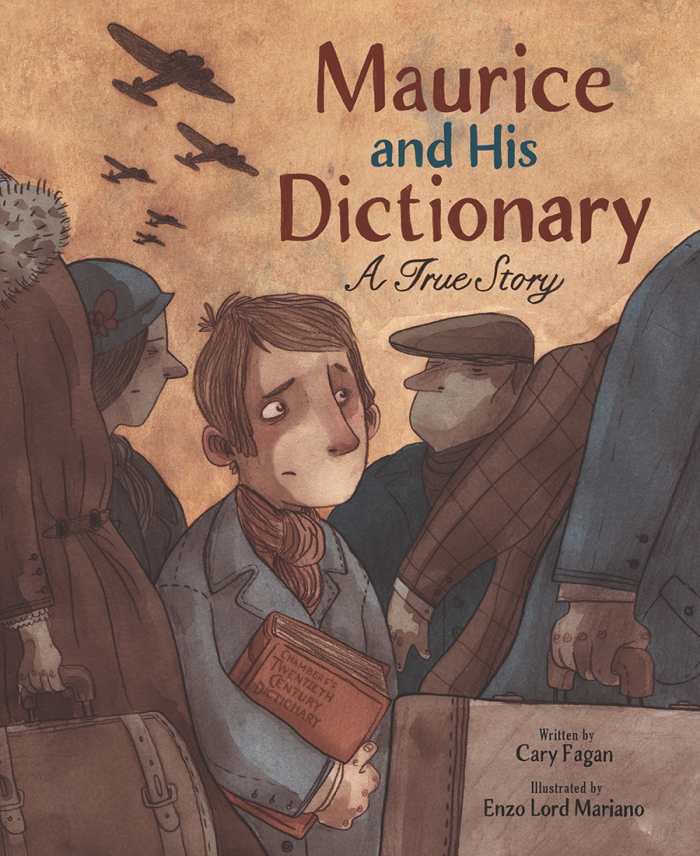
Cary Fagan
Enzo Lord Mariano, illustrator
Owlkids
Hardcover $18.95 (56pp)
978-1-77147-323-1
Buy: Local Bookstore (Bookshop), Amazon
Cary Fagan’s powerful graphic biography Maurice and His Dictionary is tender in its portrayal of World War II-era Europe.
Though capturing the terrifying plight of a Jewish family during WWII, the book also maintains the humor and joy that come from a strong, caring support system. In it, fourteen-year-old Maurice hopes to become a lawyer, even as his family escapes German persecution. The family travels from Belgium, across Europe, and ends up in an internment camp in Jamaica. While there, Maurice seeks help from the Jewish community to make up for his lost education, and teachers and professors are happy to help him out.
In Maurice’s letter to Jamaica College, a local high school, he writes “I have learned the smallest act of kindness can make a huge difference.” This line becomes the thesis of his story: no matter where his family escapes to, they are able to find people to help them, acting as a light to get through the horrors of the Holocaust. Picturesque moments stand out in this horrible period, and at both the school and in the internment camp, Maurice and his family overcome adversity.
The book’s theatrical, exaggerated illustrations complement its lighthearted writing style. Its scene-to-scene transitions, and its methods of distinguishing between reality and fantasy, are illustrative and meaningful: whenever Maurice thinks of his life before the Holocaust, the panels are colored in a bright, oversaturated orange, in sharp contrast to the dark, shaded, claustrophobic scenes that depict the family in hiding.
A moving account in which a child’s thirst for knowledge is a source of hope against a dismal, war-torn backdrop, Maurice and His Dictionary is an inspiring story.
GEORGE HAJJAR (October 22, 2020)
Sweet Dreams
The Story of the New Romantics
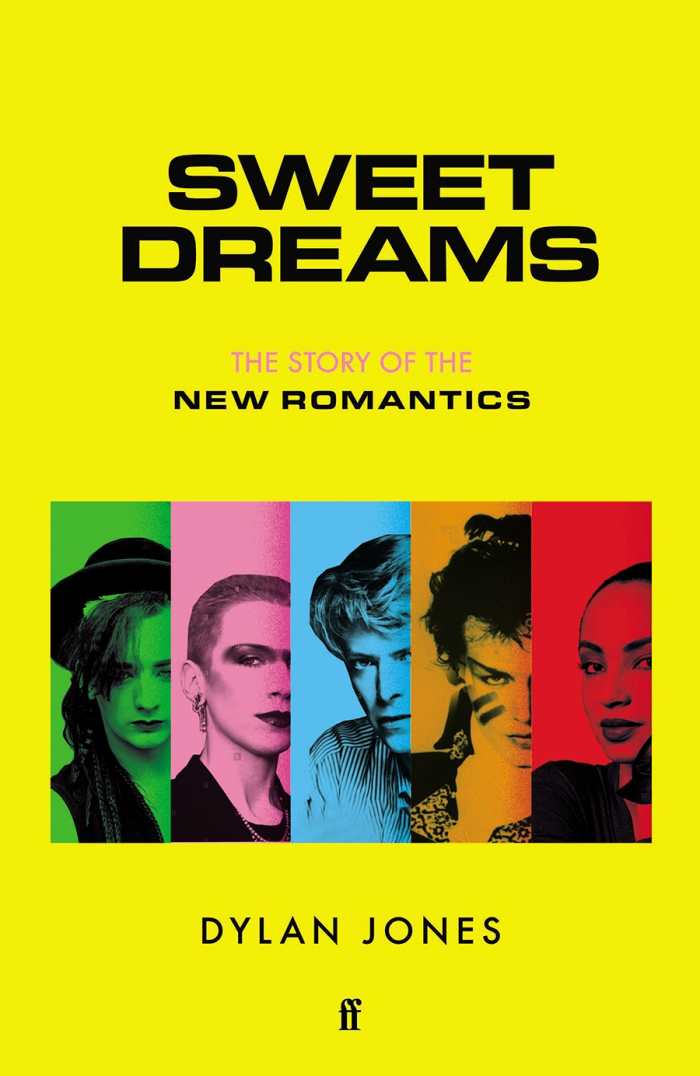
Dylan Jones
Faber & Faber
Hardcover $27.95 (432pp)
978-0-571-35343-9
Buy: Local Bookstore (Bookshop), Amazon
Dylan Jones’s Sweet Dreams is a vast and fascinating collection of interviews that showcase a decade of British music and culture—the New Romantic period, from 1975-1985.
Mid-seventies England was full of chaos and creativity as art school students found belonging in Bowie-themed nightclubs. Through interviews with designers, performers, and influencers, the evolution of this English outsiders’ scene is documented from an insider perspective, while a recommended discography provides a soundtrack for the decade.
Though England’s punk scene burned out, its DIY philosophies and disruptive appearance imprinted itself upon the creatives of an era. Club goers describe hand-making their outfits for places like the Blitz, defined by its beautiful and experimental crowd. The style magazine was born, kickstarting celebrity culture, and the first paparazzi competed for photographs and gossip. Creators of magazines like i-D explain their visions, while hairdressers and designers invented a new profession to fit the times—that of the stylist.
For the New Romantics, style was also a reclamation of self: musicians like Annie Lennox and Boy George discuss how their androgyny and sexuality subverted gender roles and was liberating for gay fans. Interviews impart the pain of the AIDS epidemic, which killed many people and impeded society’s burgeoning acceptance of the LGBTQ+ community.
History and technology merge as musicians recall synthesizers becoming affordable, describing them as the sound of the future. The relationship between music and visual media was strengthened by television; bands like Duran Duran talk about how music videos linked their music with a lifestyle. The Live Aid concert, popularized by global coverage, began the rise of stadium tours, taking London’s street culture around the world.
Sweet Dreams contextualizes the fashion, politics, sex, and technology involved in the music of The New Romantics, allowing the story of the movement to be told by those who created it.
DELIA STANLEY (August 27, 2020)
Forbidden Surgeries of the Hideous Dr. Divinus
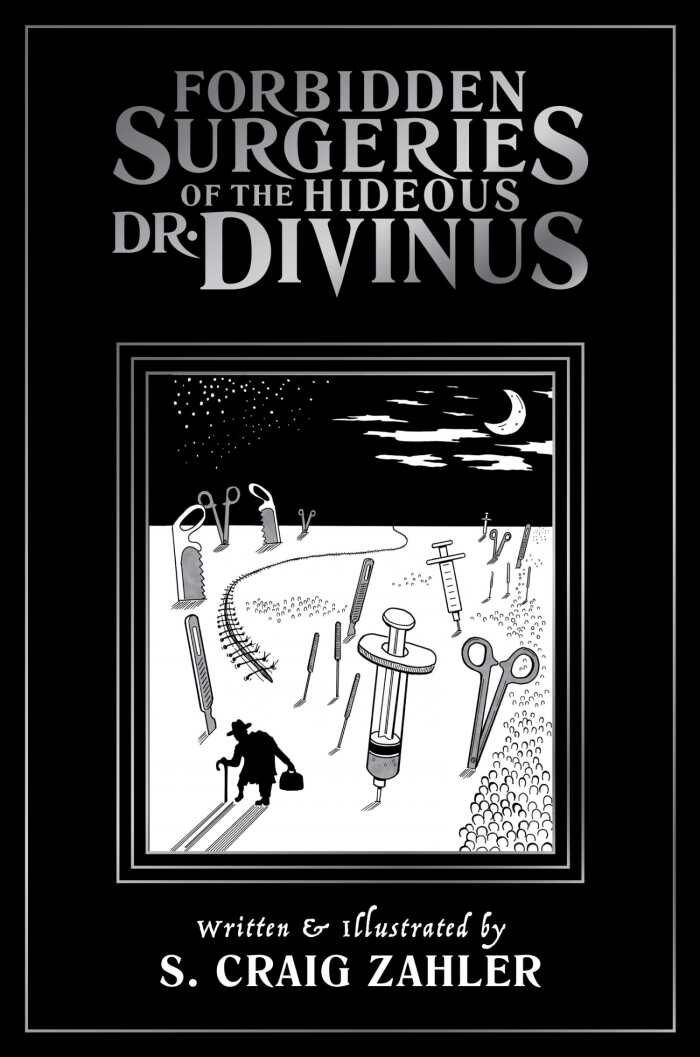
S. Craig Zahler
Floating World Comics
Softcover $15.95 (104pp)
978-1-942801-05-4
Buy: Local Bookstore (Bookshop), Amazon
Hard-boiled horror is leavened with witty dialogue and humor in S. Craig Zahler’s Forbidden Surgeries of the Hideous Dr. Divinus.
The story begins with an eerie episode in which a homeless man is drugged and taken to a hidden lab for an experiment that proves fatal. The focus then switches to a comatose woman, Lillian, and her two brothers—one a cop, the other a criminal. A strange man attempts to kidnap Lillian from the hospital, and as the brothers track him down, they uncover his identity, his purpose, and his employer—the mysterious Dr. Divinus.
The book’s black-and-white art has a crude, quirky style with original touches, like word balloons with miniature phones or intercoms to indicate a distant, electronic voice. The handwritten text is sometimes compressed to a fault, but it also feels warmer and more intimate than any computer font. The story is clear and entertaining, sometimes losing shades of nuance because of the art, but it’s delivered with energy and humor.
Strong conversations veer from tangential asides about pencil sharpeners and business cards, to amusing statements that move the plot forward, as when a young heiress calls out to her lost feline, “Presently, I shall find, scold, and kiss you.” In an example of the book’s rapid shifts between humor and horror, this scene precedes a violent turn.
Half a surreal, modern day nightmare, and half evocative of 1940s noir detective films, Forbidden Surgeries of the Hideous Dr. Divinus is comic, creepy, and compelling.
PETER DABBENE (August 27, 2020)
Barbara Hodge
